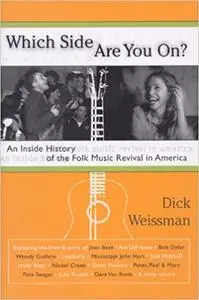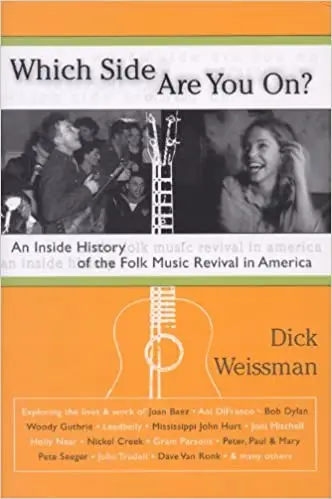Dick Weissman, "Which Side Are You On?: An Inside History of the Folk Music Revival in America"
English | ISBN: 0826416985 | 2006 | 296 pages | PDF | 22 MB
English | ISBN: 0826416985 | 2006 | 296 pages | PDF | 22 MB
In 1932 Florence Reece, the wife of a Kentucky coal miner, wrote one of the classic topical songs preserved in the folk musical revival. The song, "Which Side Are You On?," contrasts the lot of the working class and the bosses, and asks the listener to choose. This politically charged song was performed again during the Civil Rights Movement, with its lyrics appropriate to the 1960s. It was recorded more recently by Billy Bragg. Indeed, the story of this song might serve as a microcosm of the entire history of the folk music revival. Dick Weissman, former member of the Journeymen and a musician still releasing CDs of his original compositions, brings his personal and professional involvement to this definitive history. Which Side Are You On? includes chapters and sections on the Lomaxes, Harry Smith, the little known Lawrence Gellert, Woody Guthrie, Josh White, Leadbelly, Pete Seeger, groups such as the Weavers and the Kingston Trio, Dave Van Ronk, Bob Dylan, Joan Baez, Paul Simon, Joni Mitchell, Judy Collins, Mary Chapin Carpenter, Natalie Merchant, Ani Difranco, Bela Fleck, Nickel Creek, the Indigo Girls, and many others. Which Side Are You On? also explores the folk music business in depth: how it all works, where the power really lies, how the artists have been manipulated and often exploited, the dynamic between artist and audience. Though he writes as a historian, Weissman also has seen it all from the inside, and includes anecdotes that are both funny and poignant: My friend and guitarist-singer Artie Traum took care of one of two houses that Bob Dylan owned in Woodstock, some thirty five years ago. The house had thirty seven rooms! Artie was instructed not to give out Dylan's phone number to any caller. The first caller was Joan Baez, and Artie followed instructions, calling Dylan at the other house to relay the call. During Artie's house-sitting chores, I visited him. He took me on a brief tour of the house. In one room were sacks of mail. We randomly opened a half-dozen letters. The one that I remember was by a female fan in North Dakota. She had been to a Dylan concert and reminded him that they had met. There was something touching though pathetic about the letter.



